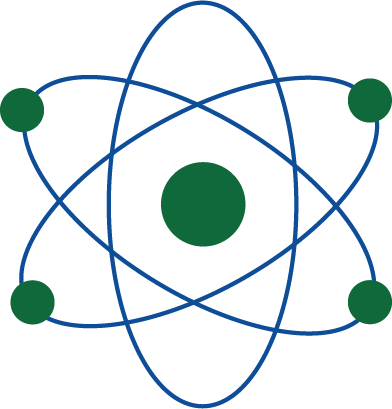
An In-Class Field Trip/Embedded Professional Learning session is a unique experience for the classroom teacher and the students in his or her class to view science from a different perspective. It will serve the dual purpose of embedded professional development for the teacher to see another teacher’s teaching model, and at the same time, let the student see a different perspective on the subject being taught.
An experienced GYSTC instructor will join together with the teacher to present a lesson related to what the teacher will need the day of the in-class field trip. The local teacher will be expected to be present the entire time and assist the GYSTC instructor in making the experience valuable to the teacher and the students alike.
On-site In-Class Field Trip/Embedded Professional Learning sessions are $10 per student (travel fees may apply). Virtual In-Class Field Trip/Embedded Professional Learning sessions are $5 per student. This includes the activity and materials.
To help us best prepare for the virtual event, when registering, please enter the exact number of students you expect to attend these sessions. This amount will be what is reflected on your invoice, and no adjustments can be made after we ship the materials based on the number provided. Thank you for your understanding.
To help us best prepare for an on-site event, when registering, please enter the exact number of students you expect to attend these sessions. This amount will be what is reflected on your invoice. Due to planning constraints, we are unable to accommodate changes within 14 days of your event. Thank you for your understanding.
*Please note: These sessions are offered by the GYSTC State Office. If you are a member of a GYSTC Regional Center, please contact your Regional Coordinator to schedule an In-Class Field Trip/Embedded Professional Learning session.


In-Class Field Trip Catalog
| Kindergarten | SKP1.a & b; MCCK.MD.1; MCCK.G.2 | Kite Day | Compare the properties of different materials to make the best kite. |
| Kindergarten | SKL1.a | Living versus Nonliving | Compare and contrast living versus nonliving things. |
| 1st Grade | S1L1.a | Parts of a Plant | Create a model of a plant. |
| 2nd Grade | S2L1.c | Bee a Pollinator | Model the role of bees as pollinators. |
| 2nd Grade | S2E2.d | Out of this World | Learn about the patterns of the Moon. |
| 2nd Grade | S2P2.a, b, & c | Rosie Revere’s Flying Machine | Use knowledge of force and motion to design a flying machine. |
| 2nd Grade | S2P2.a, b, & c | Toy Inventor | Use knowledge of force and motion to design a toy. |
| 3rd Grade | S3L1.b | A Lesson from Nature | Use knowledge of plant and animal mimicry to design an invention. |
| 3rd Grade | S3E2.a | Fossils and Extinction | Model how fossils are formed. |
| 3rd Grade | S3L1.b | Hiding in Plain Sight | Explore and model the animal adaptation of camouflage. |
| 4th Grade | S4L1.a & b | Eco-Maze-Ing | Model the flow of energy through a food chain. |
| 4th Grade | S4P1.b | Krazy Kaleidoscopes | Explore and model how light travels and is reflected. |
| 4th Grade | S4P3.a & b | Hear Ye! Hear Ye! | Construct a model of the human ear and learn how we hear sound. |
| 4th Grade | S4P3.a & b | Rosie Revere Flying Machine | Use knowledge of force and motion to design a flying machine. |
| 4th Grade | S4P3.a, b, & c | Simple Machines | Create simple machines to move a small object. |
| 4th Grade | S4P2.a & b | Sound Investigations | Explore how sound is produced and changed. |
| 5th Grade | S5L3.a, b, & c | Cells | Construct a model of a cell. |
| 6th Grade | S6E1.a, b, c, & e; S6E2.a, b, & c | Earth’s Place in the Universe | Use a model to explore the positions of the Sun, Earth, and Moon. |
| 6th Grade | S6E5.d & e | Earth’s Surface | Construct a model of erosion and deposition. |
| 6th Grade | S6E2.a | Moon Phase Wheel | Create a model to explain the phases of the Moon. |
| 7th Grade | S7L4 | Birds of a Feather | Explore how different bird beaks are adapted to their environments. |
| 7th Grade | S7L2.c | Body Systems in Space | Design a product to help astronauts live in zero gravity. |
| 7th Grade | S7L3.a & b | Strawberry DNA Extraction | Investigate how plants pass traits to the next generation by extracting DNA from strawberries. |
| 8th Grade | S8P1.a, d | Elements, Compounds, & Mixtures | Use knowledge of the properties of matter to separate iron from cereal. |
| 8th Grade | S8P2.b | Potential to Kinetic Energy: Catapult | Model how potential energy is transformed to kinetic energy by building a catapult. |
| 8th Grade | S8P2.b | Bounce | Conduct an investigation to observe and measure the effects of elasticity. |

*Please note: These sessions are offered by the GYSTC State Office. If you are a member of a GYSTC Regional Center, please contact your Regional Coordinator to schedule an In-Class Field Trip/Embedded Professional Learning session.
